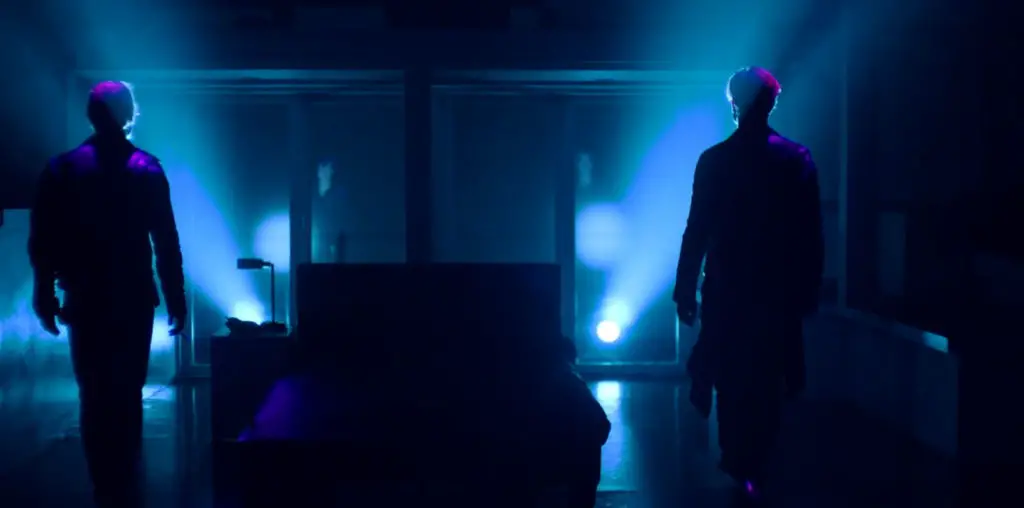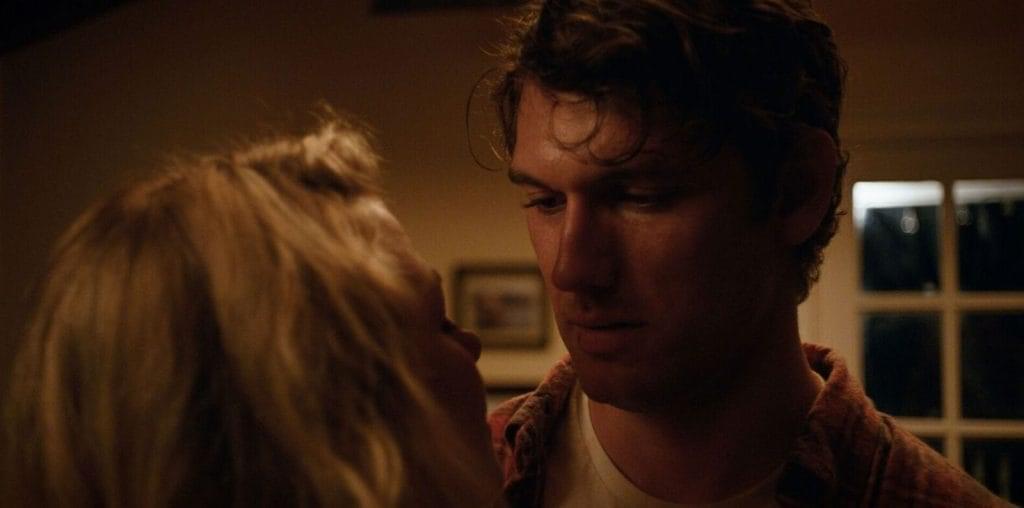
BOOTLEG FILES 241: The Stranger” (1946 feature starring and directed by Orson Welles).
LAST SEEN: Available for viewing at several online sites.
AMERICAN HOME VIDEO: Only as a public domain dupe.
REASON FOR BOOTLEG STATUS: A lapsed copyright.
CHANCES OF SEEING A COMMERCIAL DVD RELEASE: No, it is stuck in public domain hell.
Of all of the films directed by Orson Welles, “The Stranger” probably has the worst reputation. This is fairly peculiar, because there’s absolutely nothing wrong with the film.
The problem with “The Stranger” emerges from its odd place in the Welles canon: it followed “Citizen Kane” and “The Magnificent Ambersons.” Really, how can you top those films?
By 1946, Welles held a curious position in the film industry. He was very much in demand as an actor, but the catastrophic fallout that accompanied the termination of his RKO Radio Pictures contract in 1942 gave him the reputation of being a difficult and unpredictable artist who made strange, artsy films that flopped at the box office.
Welles received the invitation to make a film from Sam Spiegel, a somewhat shadowy Polish-born producer associated with the small International Pictures operation. Welles took the offer, telling an interviewer at the time: “I wanted to do a film to prove to the industry that I could direct a standard Hollywood picture, on time and on budget, just like anyone else.”
The resulting film, “The Stranger,” was closer to the concept of “a standard Hollywood picture” than to the bold, iconoclastic visions that Welles poured into “Citizen Kane” and “The Magnificent Ambersons.” And that’s where the film’s reputation problems lie: too many Welles scholars see the film as quotidian. This is unfortunate, since Welles’ work as the director of “The Stranger” is anything but ordinary.
“The Stranger” was a bold film for its time, as it addressed the then-taboo subject of missing Nazi war criminals. After World War II, more than a few high-ranking members of the Third Reich evaded the Allied forces. The search for these missing men was something on an embarrassment for both the American government, but the media of the day significantly played down the problem.
In “The Stranger,” Welles plays Franz Kindler, a Nazi official who eluded the Allies thanks to his mania for anonymity – no photograph of him was known to exist. Kindler, through circumstances that were never entirely explained in the film, somehow wound up teaching an exclusive prep school in a small Connecticut town. Even better, he marries the prettiest daughter of a Supreme Court justice who lives in town (played by Loretta Young).
But Kindler’s cover is slowly picked apart by Inspector Wilson (Edward G. Robinson), a detective with the Allied War Crimes Commission who was tracking one of Kindler’s former colleagues. Kindler is able to kill his ex-comrade, but Wilson is suspicious of Kindler’s background and begins an elaborate cat-and-mouse game to unmask him.
“The Stranger” was not the easiest film for Welles to create, on several levels. For starters, he initially hoped to cast Agnes Moorehead, who starred in his first two films, in the role of Inspector Wilson. But Spiegel balked, noting that Moorehead was primarily known as a supporting-level character actress and would not guarantee box office returns. Edward G. Robinson, an established star since the early 1930s, was cast instead. Welles and Robinson never truly hit it off, and both men badmouthed each other years later when recalling their work together.
Second, Welles was required to work with a script that what not of his creation. This was the first and only time that Welles did not write the screenplay for a film that he directed. Anthony Veiller, a veteran Hollywood screenwriter, created the foundation for “The Stranger.” Welles, with assistance from John Huston, made uncredited additions to the story. But for the most part, Welles’ contract with Spiegel required that he stick to Veiller’s script.
Then there were problems dealing with Spiegel. Welles would later tell Peter Cowie, one of his many biographers, this intriguing story: “There was also a famous fight about a close-up. (Spiegel) wanted to cut into a scene for a close reaction of Loretta Young. I was opposed to this and, remarkably enough, Miss Young took my side in a heated debate involving Spiegel, her agent and a number of other officials. Because the female star demanded that she not have a close-up, we won the day.”
Welles would also later claim that Spiegel cut out two reels of footage that took place in South America. This footage was supposed to be the back story of how Kindler escaped Europe and would up in Connecticut. However, no independent verification that this footage ever existed has been confirmed – no publicity stills or production logs have turned up. Considering Welles is the sole source of this story, and considering that Welles had a propensity to exaggerate wildly for biographers and interviewers, one can assume the reliability of this tale is on the shaky side.
Welles’ biographer Frank Brady also reports the filmmaker/star was fighting a physical battle to remain slim for the big screen. During the production of “The Stranger,” he was on a vigorous diet regimen that reportedly included daily hypodermic shots by his physician in his rear end. Welles looked to be in fine form for the film, but it must have been a grueling experience for someone with a reputation of culinary overindulgence.
But even with these problems, the film is often quite fascinating. “The Stranger” openly confronts the brutal anti-Semitism of the Nazi regime, both in the subtle slip of the tongue that ultimately identifies Kindler’s true identity (when reminded that Karl Marx was German, he casually replies: “Marx wasn’t a German, he was a Jew”) and in the harsh presentation of footage from the liberated concentration camps. The latter footage is used to expose Kindler to his wife and in-laws, and this marked the first time that the Nazi atrocities were incorporated into a narrative feature. (The concentration camp footage would not be used again by Hollywood until “Judgment at Nuremberg” in 1961.)
“The Stranger” is also rich with the many distinctive touches that separated Welles from other filmmakers: his striking camera effects (particularly the use of deep focus cinematography), an intelligent multi-layered use of sound, richly evocative performances by the supporting ensemble (particularly by Billy House, a chubby burlesque comic who played the gregarious general store manager), subtle editing and a distinctive personality that unmistakably linked the film to its director. And contrary to their respective insistence, Robinson and Welles gave magnetic performances – their final confrontation sequence offers the actors at their finest. Loretta Young’s role, admittedly, was underwritten in comparison and lacked any boffo dramatic moments, but her star power made her an equal to her male leads and her force of personality compensated accordingly.
Welles kept his promise in bringing the film in on time (one day ahead of schedule) and on budget. Ironically, the production was picked up for release by RKO Radio Pictures, where it turned out to be a box office hit. Anthony Veiller’s screenplay received an Oscar nomination. Welles was able to leverage his return to directing to make two more films in Hollywood, but both of those 1948 productions (“The Lady from Shanghai” and “Macbeth”) ran into production problems that wrecked Welles’ reputation before “The Stranger.” Within three years of “The Stranger,” Welles had to retreat to Europe to continue directing.
Over the years, Welles’ insistence that “The Stranger” was an unimportant film was picked up by many of his followers. As a result, many Welles experts (genuine or otherwise) blithely dismiss the film. Ironically, it among Welles’ most conspicuously available titles – a lapsed copyright put the film in the public domain, and endless dupes have been circulating for years. Most of these bootlegged offerings are actually okay, so it is easy to appreciate the film’s audio and visual elements.
“The Stranger” may not be at the same level as “Citizen Kane,” but what is? On its own terms, it is a fine and invigorating experience that deserves to be sought out and enjoyed.
IMPORTANT NOTICE: The unauthorized duplication and distribution of copyright-protected material, either for crass commercial purposes or profit-free s***s and giggles, is not something that the entertainment industry appreciates. On occasion, law enforcement personnel boost their arrest quotas by collaring cheery cinephiles engaged in such activities. So if you are going to copy and distribute bootleg videos and DVDs, a word to the wise: don’t get caught. Oddly, the purchase and ownership of bootleg videos is perfectly legal. Go figure .

